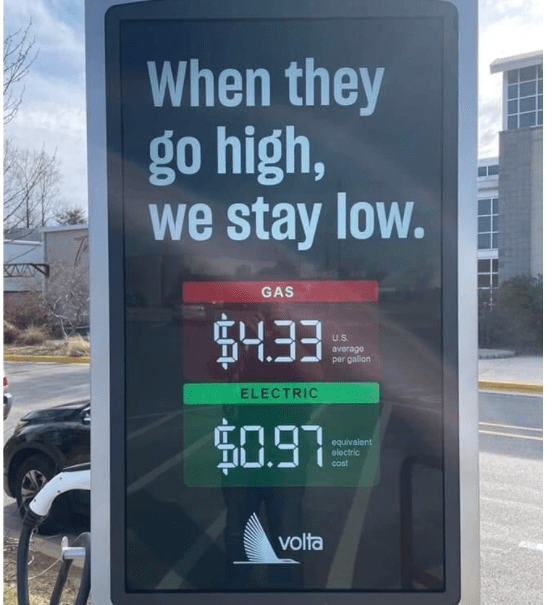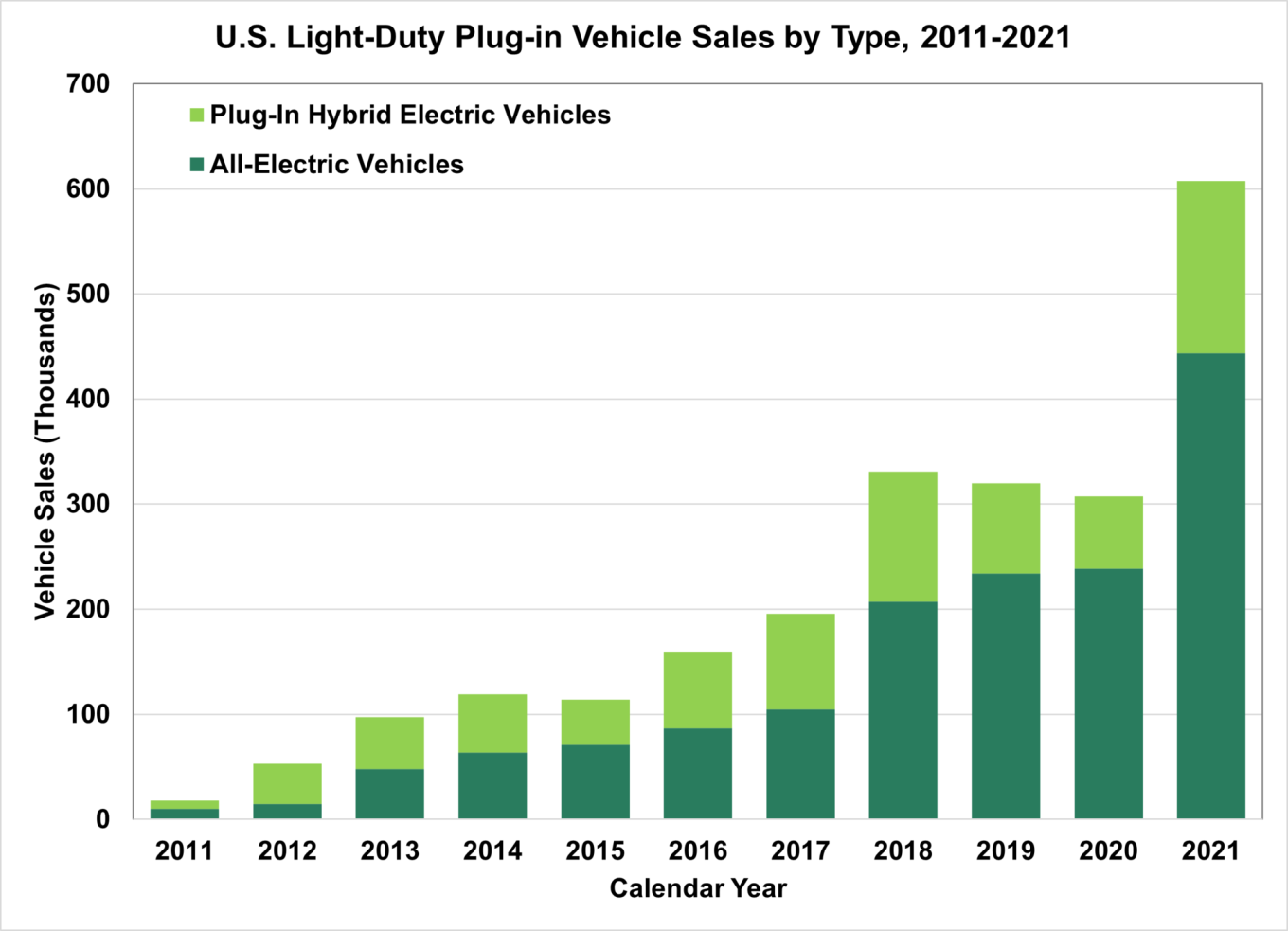Where’s My Low Cost Electric Vehicle?
Even with today’s rising electric vehicle prices and shortages, long-term policy goals should remain the focus.
It is a good time to be an electric vehicle owner. Across the country, gasoline prices are 50% above where they were at this time last year. That means $16 more for each twelve gallon fill-up (typical for the average for an American driver). Electricity prices, on the other hand, have increased by just 10%. More drivers are looking to trade in their petro-cars for electric-powered ones. Unfortunately, electric vehicles have become hard to find, and their prices are rising. What should be glory days for the electric vehicle market, is becoming a period of frustration.
Policymakers are looking for ways to help the electric vehicle market. Both short-term incentives and longer-term policies are on the table. A look at the current market dynamics should point policymakers strongly toward long-term policies that continue to stimulate companies to innovate and invest.

Electric Vehicle Prices Climbing
Recent research from James Bushnell and coauthors provide evidence of the strong link between rising gasoline prices and growing consumer demand for electric vehicles. However, today’s market is struggling to keep up with today’s demand. Many consumers wanting electric vehicles are joining long waiting lists. Others are buying vehicles that have not even been manufactured yet. My parents recently traveled hundreds of fossil-fueled miles to buy a rare vehicle on a dealer’s lot. Consumers who find a vehicle are paying significant dealer mark-ups.

The automakers themselves are raising prices too. In early March, start-up electric truck maker Rivian increased its prices by 17 to 20%. Later that month, Tesla increased the prices of all of their models by 4 to 10%. The impact on Tesla buyers is even greater for some models in California because the price increases caused them to lose eligibility for the California Clean Vehicle Rebate when a program maximum price threshold was crossed.
President Biden pledged to lower the price of electric vehicles in his State of the Union address, but prices are headed in the wrong direction.
Consumer Tax Credits vs. Automaker Profits
One possible policy response to rising electric vehicle prices is for governments to give consumers larger rebates when they purchase a vehicle. The now-dead federal Build Back Better bill proposed to do this by increasing the electric vehicle tax credit from $7,500 to $12,500. On first impression this would lower the cost of buying an electric vehicle by an additional $5,000. However, this is an unlikely outcome given the severe supply constraints in the auto market today. Today’s widespread supply-chain problems, including the global chip shortage, mean that if demand increases, automakers cannot ramp up production. But they can raise prices. In other words, an increase in the tax credit could end up increasing automaker prices and profits instead of lowering consumer costs
In economics, there is a term for considering this. “Tax incidence” is used to describe whether a tax change flows to producers or consumers. The tax incidence may not match policymakers’ intentions due to market dynamics. For example, the benefits of a consumer tax credit could flow to producers instead, as described above.
Frankly, economics research is a bit ambiguous on how vehicle manufacturers will respond to juicier rebates and what the tax incidence might be. James Sallee has analyzed how changes in federal subsidies for the Toyota Prius in the 2000s impacted prices. For several years demand for the Prius exceeded Toyota’s expectations, and led to long waitlists, similar to today’s electric vehicle market. During this period, when tax incentives were increased, Toyota did not raise prices even though it could have. Sallee surmises that Toyota was considering the impact of short-term price increases on longer-term sales of a vehicle-type that was just getting established in the market.
Nonetheless, policymakers shouldn’t take much comfort from the Prius research. Today’s automakers are demonstrating a willingness to raise prices. Perhaps the electric vehicle market is established enough by now to push through the price increases without any long-term harm to sales. It probably helps that the gasoline vehicle market is being hit by the same supply-chain woes as the electric vehicle market.
Focusing on the Long-Term
Longer-term policy commitments remain an important tool to grow the electric vehicle market and lower costs for consumers.
Federal and state standards that dictate an increase in electric vehicle sales over time are already having a transformative impact on the auto market. Plug-in vehicles are making up a growing fraction of the overall automotive market, reaching a 5% market share in the fourth quarter of 2021. Sales almost doubled from 2020 to 2021. Even in the face of supply-chain challenges, automakers that make gasoline and electric vehicles, such as Ford, have responded by focusing their manufacturing efforts on the highest profit margin models, which currently includes electric vehicles.

Policymakers can keep automakers focused on innovating and investing in the future of electric vehicles by extending and strengthening long-term policy commitments. The latest example is the US Transportation Department’s announcement last week to increase federal fuel efficiency standards by 8 percent for model years 2024 and 2025 and 10 percent for model year 2026.(#5 on Max Auffhammer’s list of Five Areas of Energy and Climate Progress to Watch for in 2022!). Investments in charging infrastructure and electricity pricing reform can also pay out over time by assuring the automakers that the electric vehicle market will be strong for years to come.
These policies won’t do much for people stuck on an electric vehicle waitlist. But over the long term they bode well for the climate.
Keep up with Energy Institute blogs, research, and events on Twitter @energyathaas.
Suggested citation: Campbell, Andrew. “Where’s My Low Cost Electric Vehicle?” Energy Institute Blog, UC Berkeley, April 4, 2022, https://energyathaas.wordpress.com/2022/04/04/wheres-my-low-cost-electric-vehicle/
Categories
Andrew G Campbell View All
Andrew Campbell is the Executive Director of the Energy Institute at Haas at the University of California, Berkeley. At the Energy Institute, Campbell serves as a bridge between the research community, and business and policy leaders on energy economics and policy.

I only drive 2,600 miles per year. It would not make financial sense to replace a perfectly good car for another one if it is not driven at least 10,000 miles per year. However, replacing the natural Gas furnace that uses 530 Therms of Natural Gas each year with Electric heat produced by solar panels and utility solar credits does. Since Electric cars get about 3 miles per Kilo Watt Hour of stored charge and to convert 1 Natural gas Therm to a Kilowatt Hour you have to multiply 1 by 29.300111111111, since 1 Therm is 29.300111111111 Kilowatt Hours. The result is the following: 1 thm × 29.300111111111 = 29.3 kWh 1 thm = 29.3 kWh We conclude that one Therm is equivalent to twenty-nine-point three Kilowatt Hours: Thus, is equivalent to 87.9 miles of driving an EV. The 530 Therms I save by using my excess solar is equivalent to driving an EV 46,587 miles per year. The utility, PG&E and East Bay Community Energy only value my residual Energy at True-Up as 3 cents of value. The 2,600 kilo Watt hours that I used to heat my home this past winter would have only gotten me back at True-Up $78.00 but saved me $1.55 per Therm X 530 therms + $821.00 or $743 in savings. My old furnace is only 40% efficient when you include heating the duct work and older heat exchanger built in 1971. if I had to buy the Electricity at retail, the tier 2 electrical rate on the 2,600 kilo watt hours would have been 33.33 cents X 2600 = $ 866.00 to heat my home with 100% efficient electricity. Bottom line, it is better to install solar panels on your home than buy and Electric Vehicle and replace your Natural Gas appliance with electric ones first before ditching your perfectly good automobile that runs on gasoline.